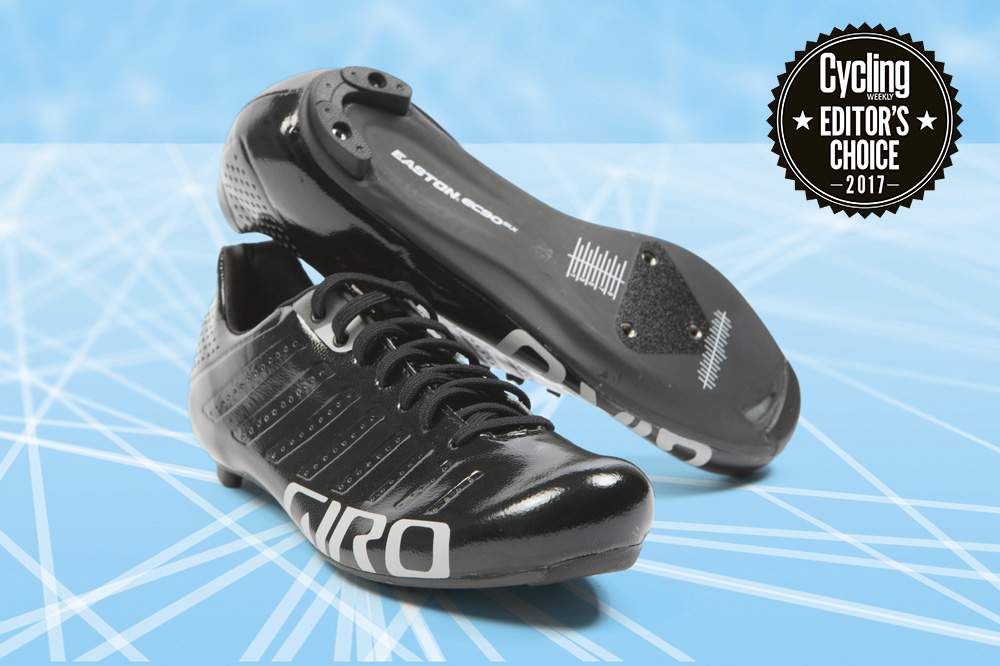Giro Empire SLX cycling shoes review
Lightweight cycling slippers which ooze style and offer finely tuned fit alongside a stiff sole - what's not to love?

Classic good looks and not a gram of excess weight on the body. We're talking about the Giro Empire SLX cycling shoes - and it's these attributes, along with an extremely close fit and unique blend of comfort and stiffness at the sole which make these shoes an Editors Choice 2017 contender...
In a world of Boa constrictors and convoluted ratchets, the simplicity of the Giro Empire SLX lace-ups offers a more traditional aesthetic which harks back to the days of old.
Designed with input from cycling shoe aficionado (and BMC pro) Taylor Phinney, this featherweight, super-stiff shoe has been favoured by Sir Bradley Wiggins — he wore them for his victories in the World Championships time trial and the Tour of California.
But how practical are laces? Well, surprisingly so. You can certainly adjust the fit to a high degree, but it takes a lot more time than a ratchet. Adjustment on the fly is not possible either. This is not a problem for the likes of Phinney, but some riders do like to adjust their shoes as they ride.
Supremely stiff but super light
The Easton high modulus EC90 soles are supremely stiff and we found them to be more rigid than those in the previous Empire shoes - whilst still lighter - weighing in at 175g for a size 42.5 (they come in half sizes, which is nice, too).
The breathable Evofibre SL upper is a supple one piece construction. It's brought together by Microfiber Sport Laces, which hold a knot and are durable - the lace option providing a multitude of contact points and therefore a snug fit.
The latest race content, interviews, features, reviews and expert buying guides, direct to your inbox!

The use of laces also carries an aerodynamic bonus, which works well when coupled with the low profile of the outer shoe.
Like other Giro shoes, with the Giro Empire SLX cycling shoes you can alter the height of the arch supports to give a comfortable bespoke fit.
The Giro Empire SLX cycling shoes suit riders with narrower feet, but due to the pliant upper and the lack of a lip on the sole (which allows your feet to spread) they can accommodate wider feet.
Points for style and practicality
With regard to looks, the consensus at Cycling Weekly is that these shoes are very hard to beat! High marks are also awarded for practicality. The heel pads are easily replaced and the upper can be easily wiped clean.
The Giro Empire SLX shoes are quite simply a stunning pair of shoes in all regards. Classic good looks are matched by the excellent performance to make some of the best cycling shoes money can buy.
Available in several colour schemes, including all white, as well as Ultraviolet and a Metallic Charcoal, Empire SLX shoes come with spare laces, a fancy looking shoe bag, plus titanium hardware replaceable heel pads. The cost? £289.99 - but we're not sure you can put a price on style and comfort.
Oliver Bridgewood - no, Doctor Oliver Bridgewood - is a PhD Chemist who discovered a love of cycling. He enjoys racing time trials, hill climbs, road races and criteriums. During his time at Cycling Weekly, he worked predominantly within the tech team, also utilising his science background to produce insightful fitness articles, before moving to an entirely video-focused role heading up the Cycling Weekly YouTube channel, where his feature-length documentary 'Project 49' was his crowning glory.